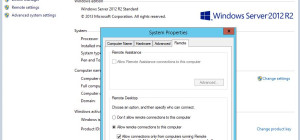 One of the greatest shifts that have taken place in the technology industry over the last decade is the rise of remote work. Working remotely has changed the culture inside companies ranging from small startups to big Fortune 500 companies. Many companies have embraced remote working for its perceived benefits and the cool factor. Some have been very successful at it, others less so. According to BusinessInsider, remote working improves productivity. The company pointed to a number of remote workers statistics, including:
One of the greatest shifts that have taken place in the technology industry over the last decade is the rise of remote work. Working remotely has changed the culture inside companies ranging from small startups to big Fortune 500 companies. Many companies have embraced remote working for its perceived benefits and the cool factor. Some have been very successful at it, others less so. According to BusinessInsider, remote working improves productivity. The company pointed to a number of remote workers statistics, including:
- 77% of remote workers reported greater productivity when working from home
- 53% reported less stress when working remotely
Remote working, however, is not a panacea for higher productivity in the absence of a smart strategy. In other words, you need to set up your distributed team for success if you want this to work for you. Below, we show you the essential steps you need to get right in order to make remote a successful strategy for your team.
How To Hire Remote Developers
The most critical aspect of remote working is how to hire remote developers successfully. Hiring remote developers for software projects involves all the challenges of traditional hiring, and then some. This is because there are new pitfalls involved in the process of filtering candidates you may never meet in person. You have less chance of getting to know them as well as you might with someone coming into the office. With the right precautions, however, you can stack the odds in your favor. Here’s how you do it.
Finding The Right Remote Employees
First, cast your net wide, and use industry platforms to push the word out. Social media allows you to spread the word from your own accounts that you need, say, a remote Rails developer or a remote mobile developer. If you’re looking to hire a nearshoring team in places like Ukraine or Poland, social media can help you spread the word. Interested developers will start sending responses in.
Secondly, you should solicit new developer recommendations from your current employees. Your existing developers know friends who are also great developers. Most frequently, these people have already been filtered for their talent by the close association with your employees. They’d probably make great team members too.
How To Hire Remote Employees Using A Test Project
That said, you don’t just take a recommendation and hire right away. The third important step in distributed team recruitment is to use a test project. Many companies that use distributed teams will give a prospective hire a test project to be completed remotely. This really helps you assess the level of talent and hard work that the candidate brings to the table.
Advice From Companies That Hire Remote Workers
Many prominent startups have been at the forefront of the remote working revolution. Some examples are BaseCamp, DigitalOcean, GitHub, Trello, and GitLab, among many others. This partial list includes some of Silicon Valley’s most successful companies, but it does not even begin to enumerate the entire range of companies with remote employees. Below, we uncover some of the tips for managing remote employees that have made them successful.
BaseCamp is a startup by two technologists that offers a project management and collaboration platform for software. BaseCamp has an illustrious history, including investments by Amazon founder Jeff Bezos. The company has a fully remote team and credits this for its high-quality software products.
Remote Workers Are Happier And More Productive
According to the BaseCamp team materials, remote works results in happier employees since they choose where they live and work. In addition, the quality of work that gets done is higher. This is because internal evaluation can now focus just on the work that gets done. Office politics is less important. Distributed working puts a spotlight on the work every employee is doing and the ones that are doing the best work can naturally prove themselves.
Monitor Remote Employees With Face To Face Meetings
GitLab makes source code management and collaboration software for technology companies. The company has a remote team and a remote work manifesto. According to the company’s manifesto, camaraderie and team bonding are very important. The company recommends conducting face to face meetings using online tools. In addition, it is important for employees to manage themselves well in order to make working in distributed teams a success.
Monitor Remote Employees with Remote Employee Monitoring Tools
Making sure your remote workers are actually working, and preventing time theft is easy when you’re using remote employee monitoring software. It gives you an overview in your workers’ activity, based on your classification of productive and unproductive apps or websites.
If your remote workers are your full-time employees, the automatic tracking feature will start monitoring their computers since the moment they turn them on. However, if you’re working with freelancers, they have the ability to start and stop the tracking based on their own schedules.
Tips For Managing Remote Workers
Managing remote teams is a challenging task that requires good communication skills and the ability to stay on top of things. Frequent communication is necessary to make sure everything is on track and your team is getting ahead. If you do not communicate, mistakes can happen and your team might miss deadlines.
In order to manage remote teams better, try some of these strategies from some of the best teams using remote work policies.
Daily Stand Up Meetings
According to GitLab, it is very important to have daily stand up meetings. Though they work remotely, many of the company’s workers work normal office hours. This also makes getting work done much easier than having everyone work at random hours with no correlation to everyone else.
Working overlapping hours that mimic normal office schedules makes organizing the daily stand up easier. In the standup, you can conduct work planning. You might find that a process like Agile or Scrum will work well for you.
Summits Every 9 Months For Team Bonding
In addition, GitLab says that meeting face to face, though not necessary, can help the team bond and develop the right team spirit. Accordingly, the company organizes summits every 9 months.
At these events, the entire company gets to meet others and learn what everyone is working on. Employees come away from these summits with a new appreciation for their role in a progressive, cutting-edge technology organization. In addition, summits can help educate the company on what’s working and what to prioritize for the upcoming year.
Document Everything And Explain Things Once To Be More Efficient
GitLab also advocates creating efficient documentation processes since a lot of the internal communication happens asynchronously. Developers are very used to software processes that work asynchronously. It’s a good idea to apply this idea in the real world as well.
Documenting problems and solutions helps cut down on the number of repeat questions and inquiries. Have a central repository where accepted solutions for common problems or questions can be easily found. Your team will appreciate the ability to have answers as and when they need them.
Train Team Members To Have A Repeatable Schedule
Finally, to really accelerate your results with remote teams, you should train your team members in efficient distributed work practices. One key recommendation from GitLab is that employees should come up with a regular, repeatable schedule that allows them to do their best work. Working the same hours each day boosts a remote developer’s rhythm and they become more comfortable with the work they do. Replicated across your entire company, this process leads to happier developers and higher company-wide team productivity.






